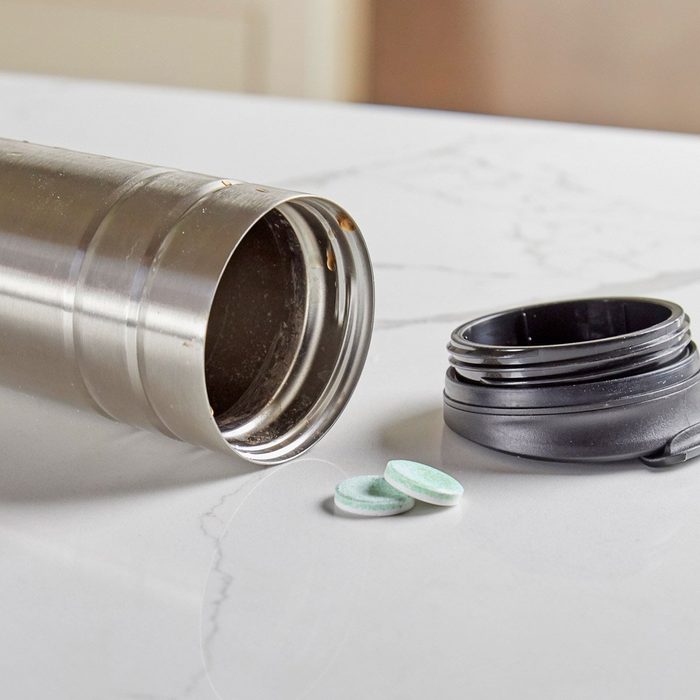
Remove tough stains from a coffee thermos
Got stubborn coffee stains on a pot, thermos or mug? Denture cleaner is the best cleaner we’ve ever found for these tough stains. Dissolve one denture cleaning tablet per two cups of hot water. Pour it in the stained vessel and let it sit for several hours and then use a scrub brush to clean off the stains and all the loosened bits. Pour the solution out and rinse thoroughly.
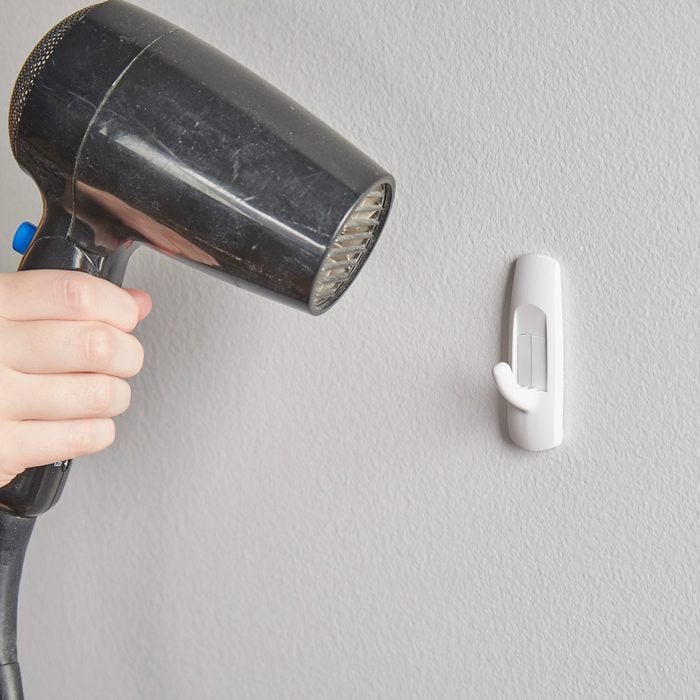
Remove stubborn utility hooks
Accidentally rip the pull tab off an adhesive utility hook? No big deal! You can still get it off damage-free. First, warm up the adhesive with a hairdryer. (30 seconds or so should do the trick.) Next, use dental floss or fishing line to gently cut through the adhesive strip. Rub off any remaining adhesive residue, and the utility hook is ready to reuse!
Don’t miss these nearly-forgotten cleaning tips from the past.
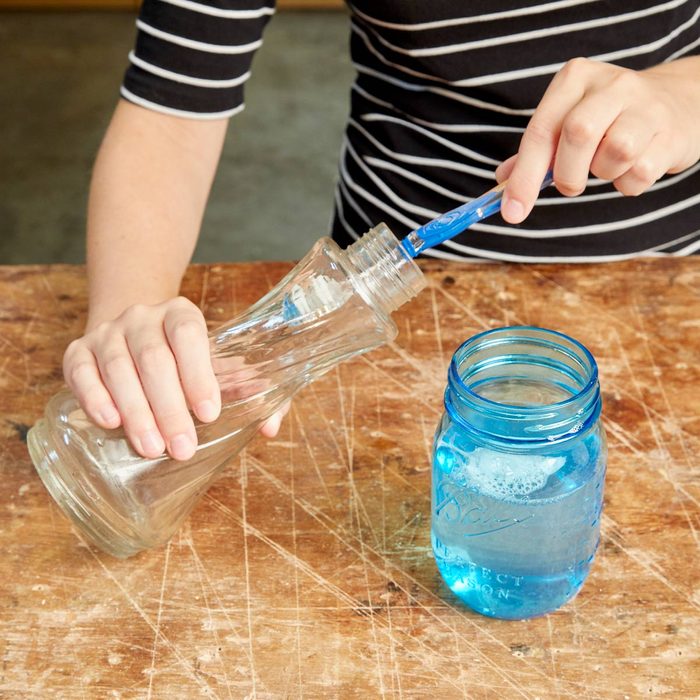
Clean hard-to-reach spots
If you own a hummingbird feeder or tall flower vase, you know how difficult it is to clean inside them. A toothbrush is perfect for cleaning those hard-to-reach places. So, when your old toothbrush has retired from duty in your mouth, give it a new job!
Here are the filthiest items in your home—and how to clean them.
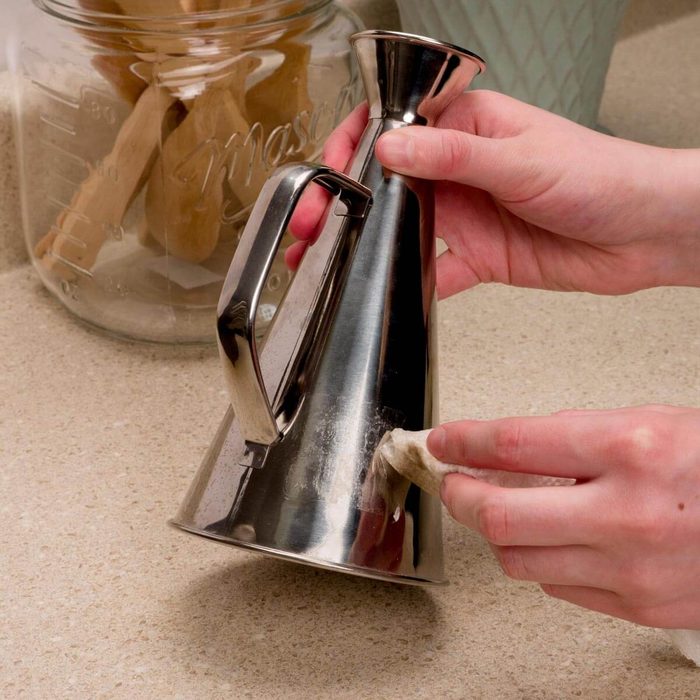
How to clean off sticker residue
Reach for cooking oil next time you want to remove annoying sticker residue. Dab any type of kitchen cooking oil—olive, canola or sunflower—onto a paper towel. Then lay the paper towel over the residue that refuses to budge. Wait a few minutes while the oil works to dissolve the stubborn glue. Finally, remove the towel and rub away the sticker residue with another clean paper towel.
A degree of caution is necessary when using this cooking oil method. This is because many oils can stain absorbent materials like clothing. If you are concerned about leaving a stain, test a drop of your chosen oil on an inconspicuous part of the object. And proceed only if the oil leaves no trace to remove glue residue.
Find out which surfaces you should never clean with vinegar.
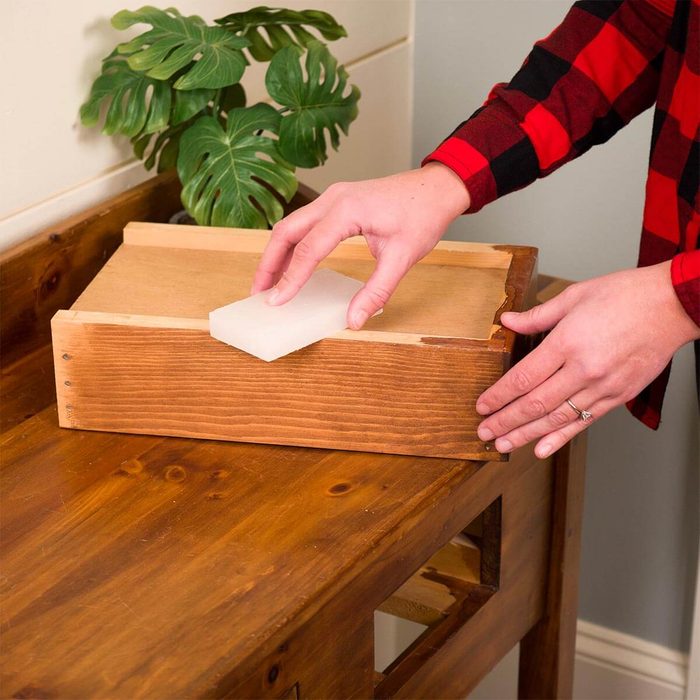
Wax for stuck drawers
Wooden drawers with wooden drawer slides often become sticky and difficult to open and close. Moisture is usually the culprit, making the wood swell or warp slightly and causing too much friction. A sticky drawer can be very frustrating, especially if you use it frequently.
Try this quick fix: rub a block of household paraffin wax along the wooden drawer slides and along any other high-friction points on the drawers. The wax will lubricate the moving parts and make the drawers operate much more smoothly.
Check out these quick spring cleaning tasks you can do in 20 minutes—or less!
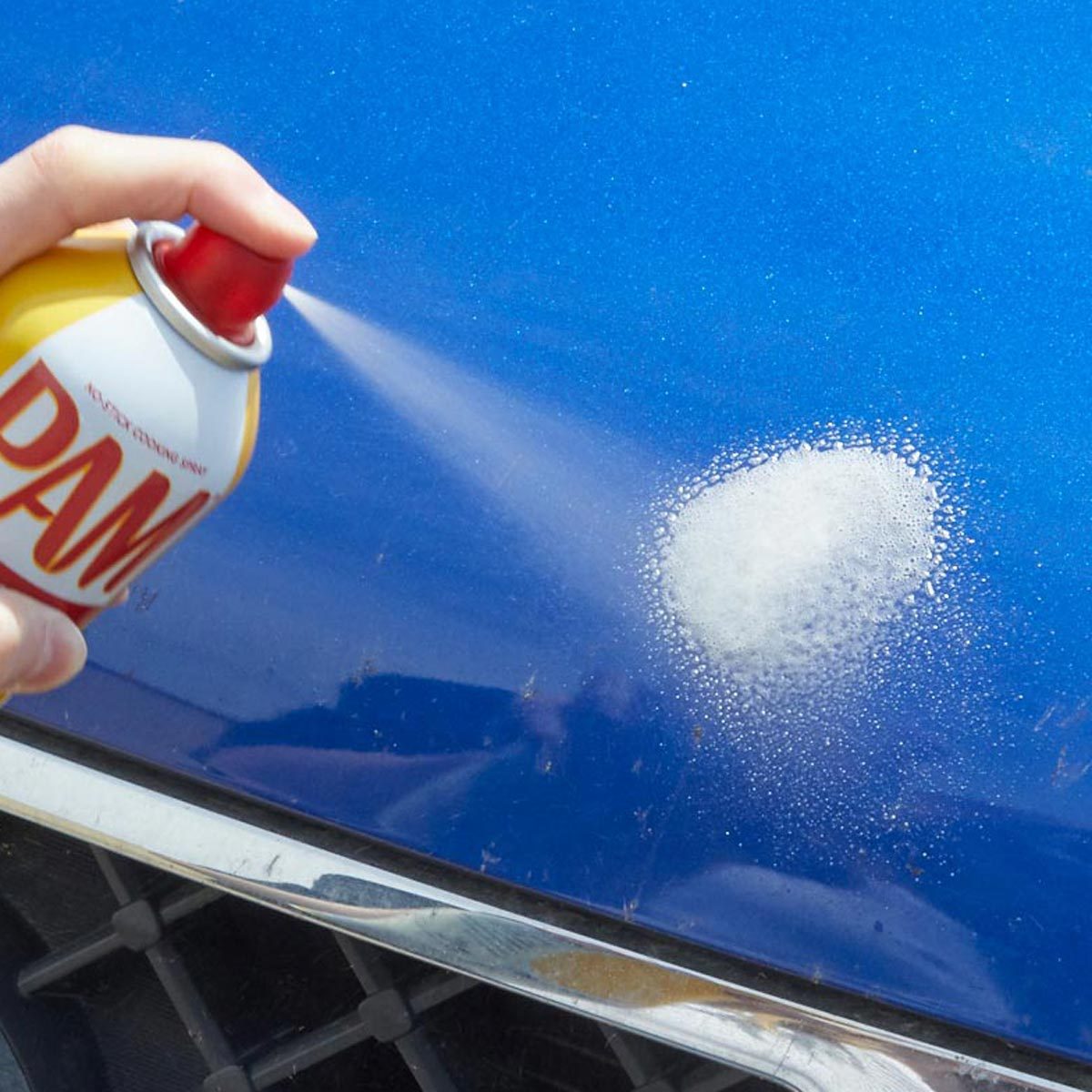
Get rid of bug splatters
When you drive a long enough distance you’re going to end up with bug splatters on the front of your car. The bugs are impossible to avoid and if you leave them on your car for too long, they will harden and will become difficult to remove. Unfortunately, cleaning the bugs off of your car requires a little more than just a quick car wash. So instead of scrubbing and potentially damaging your car’s paint job, grab a can of cooking spray. Spray a bit onto the stubborn bug, wait a few seconds, then use a microfibre cloth to wipe the area clean. Be sure to wash the area clean with soap and water like you would when giving your vehicle a car wash.
Here are 13 car washing tips the pros don’t want you to know.
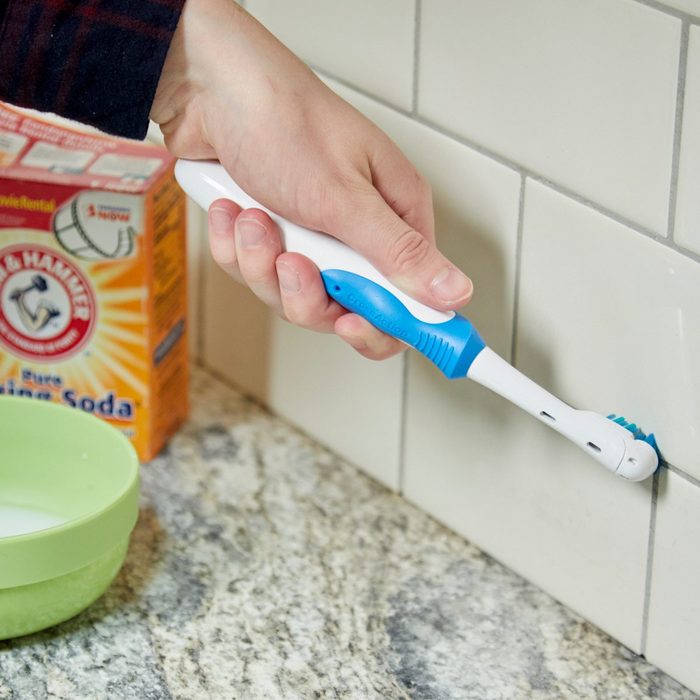
Clean more than just your teeth!
Here’s what one of our readers, Ellis Biderson, had to say about the versatility of the electric toothbrush: “One of the handy little tools that I use for cleaning around the house is an electric toothbrush. To clean up residue and splatters in the kitchen, I use just a bit of baking soda under the spinning toothbrush head to quickly clean the metal sink and plastic dish drying rack. I also use the electric toothbrush with baking soda and a tiny bit of water to scrub grout in both the kitchen and bathroom. Of course, I use a different one for my teeth!”
Discover more brilliant uses for baking soda.
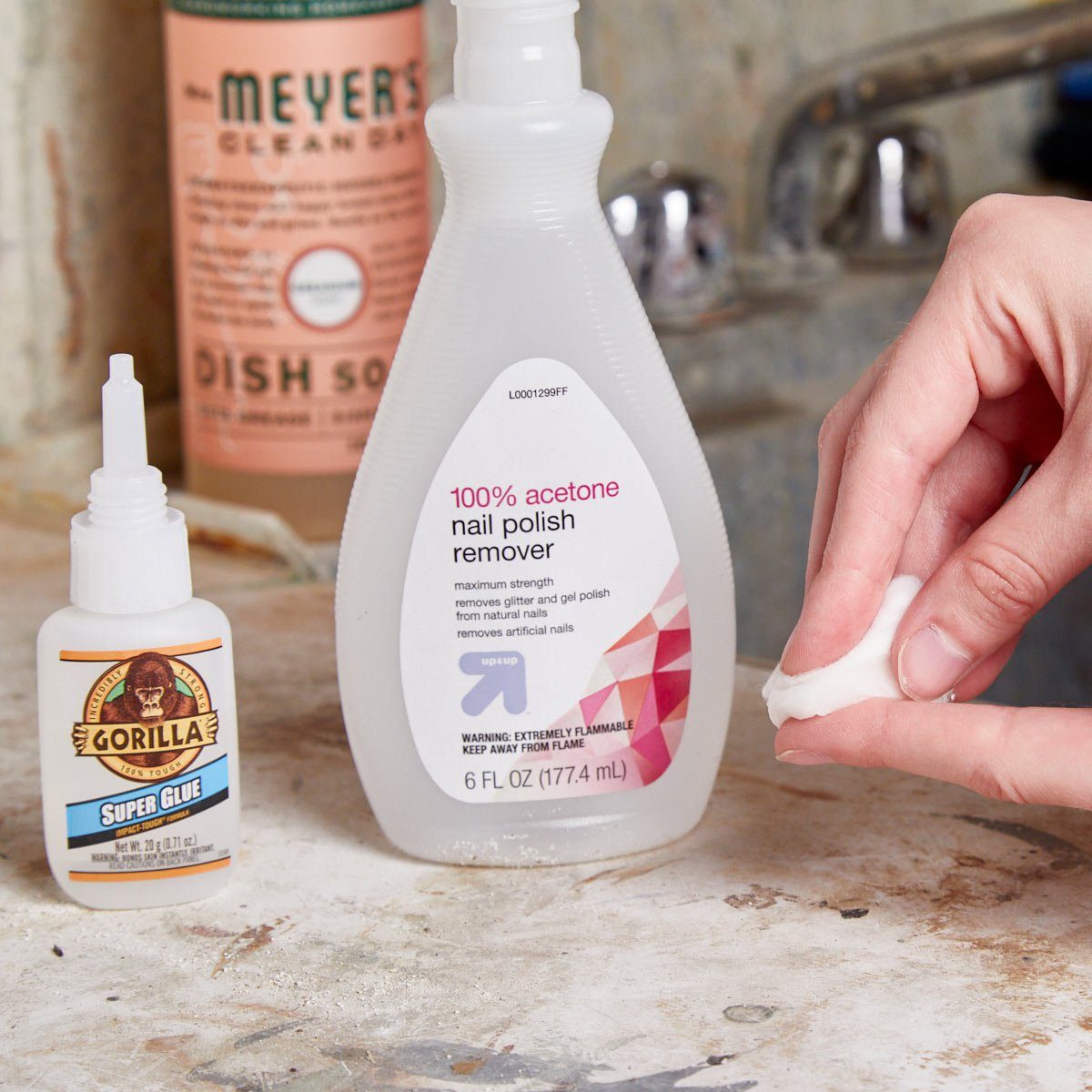
Easy super glue removal
Removing super glue is a hassle but if you act quickly you can reduce how long you’re stuck to yourself or the item you’re gluing. Soak the glue spot in warm soapy water as soon as possible to soften the glue, and then pat dry. Rub the glue with an acetone-based nail polish remover. And make sure the nail polish remover you use contains acetone. Acetone is the ingredient that will breakdown the adhesive agents of super glue. The glue will turn white and easily peel off.
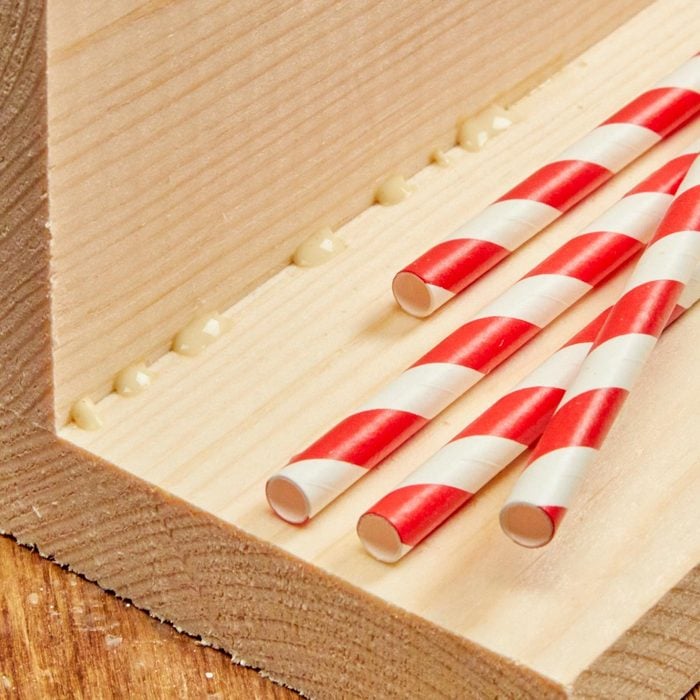
Get rid of glue squeeze-out
When glue squeezes out on an inside corner like in a drawer or the inside of any woodworking project, using a chisel has the potential to cause more harm than good. That’s because the sharp blade can easily mark-up and scratch the adjacent surface. The solution is a simple drinking straw. (We used paper straws because they can be recycled, unlike plastic ones.) The straw will conform to the shape of the corner and the excess glue will be collected inside the straw so it can’t get re-deposited anywhere else.
Here are 50 things you should be repurposing around the house.
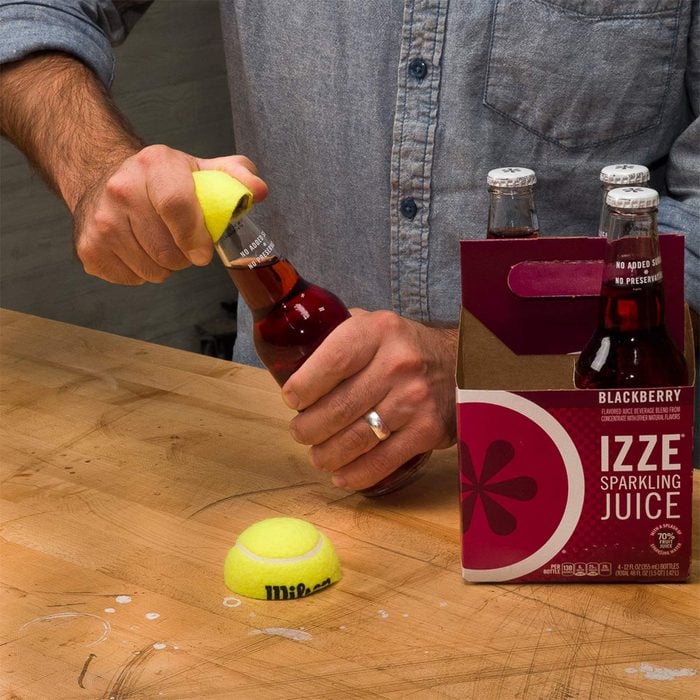
Tennis ball bottle opener
The rubbery interior of a tennis ball makes it perfect for gripping stubborn twist-off bottle caps or sticky jar lids. And the soft exterior eases the strain on your hands when bearing down on the item you’re trying to open.
To make this handy bottle and jar opener, use a utility knife to cut a tennis ball in half. For safety, stabilize the tennis ball in a vise or clamp it to a work surface while cutting, so it doesn’t move around. With one tennis ball, you can create two openers—one for your kitchen and one for your home bar area.
Discover more money-saving tricks using everyday items.
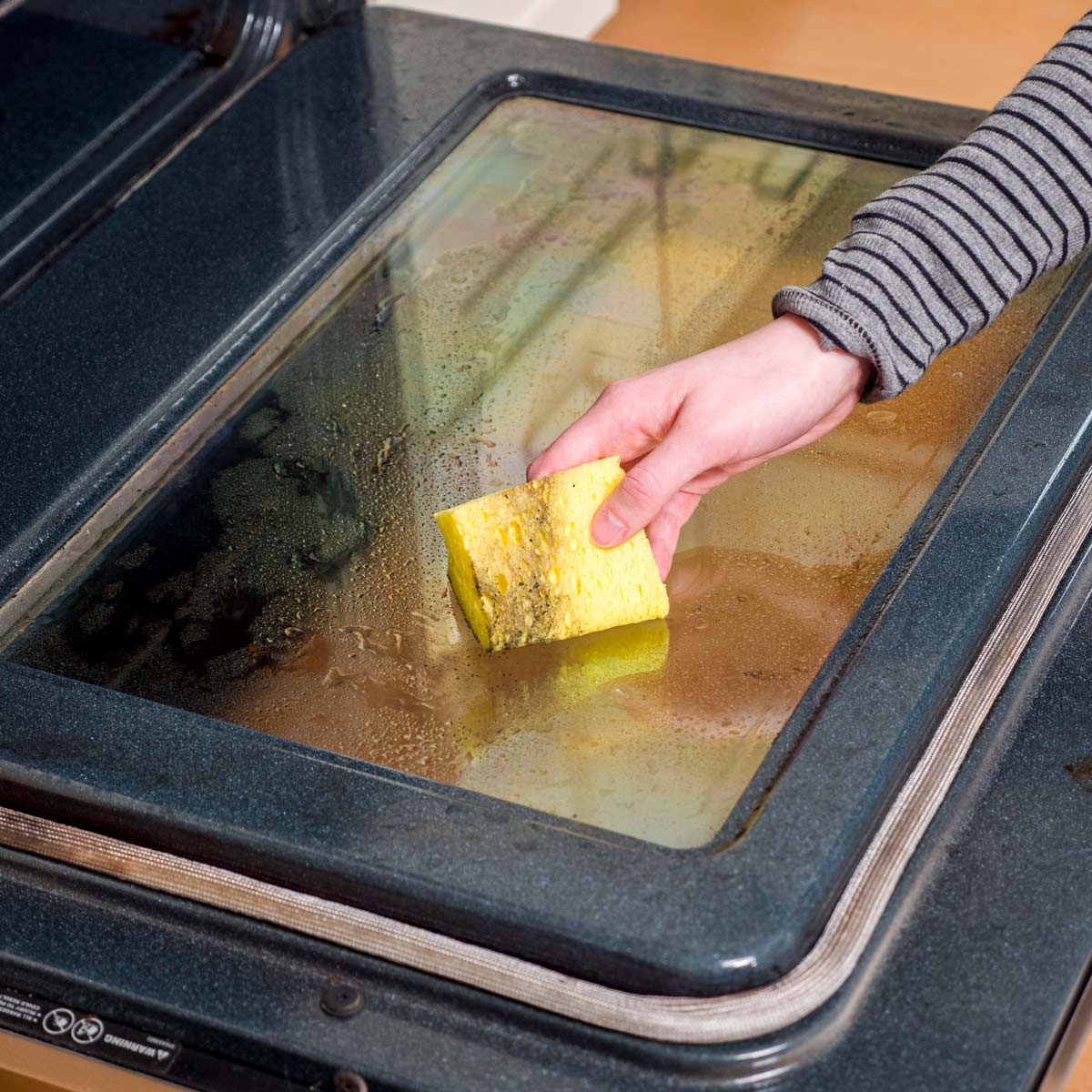
Steam for everyday spills
The advantages of traditional oven cleaners are power and speed. But for many of us, the disadvantages outweigh the good, specifically, the corrosive chemicals and caustic fumes that this type of oven cleaning can produce.
A simple, more natural way for cleaning your oven is to place an oven-safe pot or bowl filled with water inside. Set your oven to 450°F for 20 to 60 minutes to loosen dirt and grease with the steam. Once your oven is cool, wipe off the condensation and the grease will come with it. If stubborn spots persist, scrub with a paste of baking soda and lemon or vinegar. This steam-cleaning option doesn’t take as long as pyrolytic cleaning and doesn’t produce smoke, either. It’s a win-win!
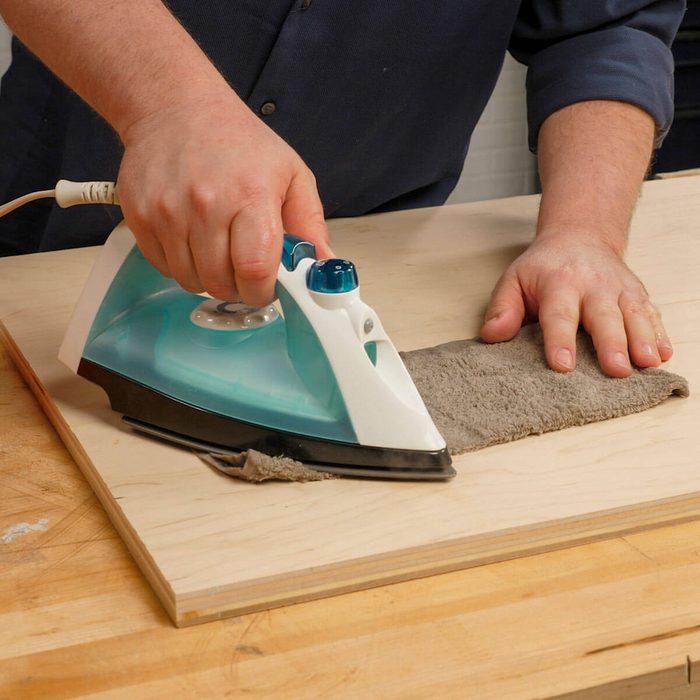
How to get dents out of wood
Soak a washcloth in water and wring it out a bit so it’s not sopping wet. Put the damp washcloth on the affected area. The water will wick through the wood, and that’s fine. Now, with your iron on its highest setting, place it on the damp washcloth over the affected area, and make small movements back and forth and in circles. Press down firmly and continue until your washcloth is dry. It won’t take long to evaporate. At this point, the wood fibres are absorbing the water and should expand back to where they were originally. Continue this process and repeat by adding more water until the dents rise up to be flush with the rest of the material.
Try these tricks to remove water stains from wood.
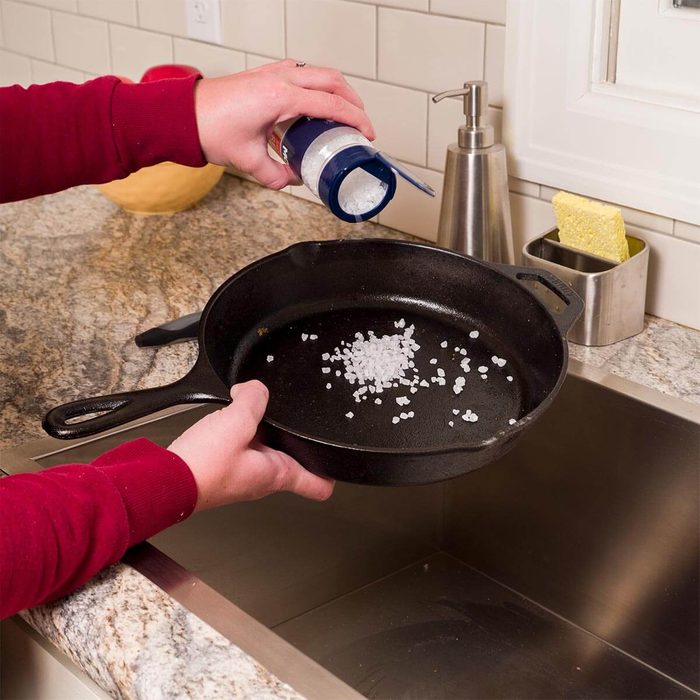
Clean a cast iron skillet
To prevent rust and extend the life of a cast iron skillet, it’s best not to use soap to clean it. Instead, use about a tablespoon of coarse salt to scrub the pan after a meal. The salt breaks up bits of stuck food and residue on the skillet. Then toss the dirty salt in the trash, rinse the pan with hot water and dry it with a clean towel. To further protect a cast iron skillet, rub a few drops of vegetable oil over the entire cooking surface.
Discover more expert advice on how to clean a cast iron pan.
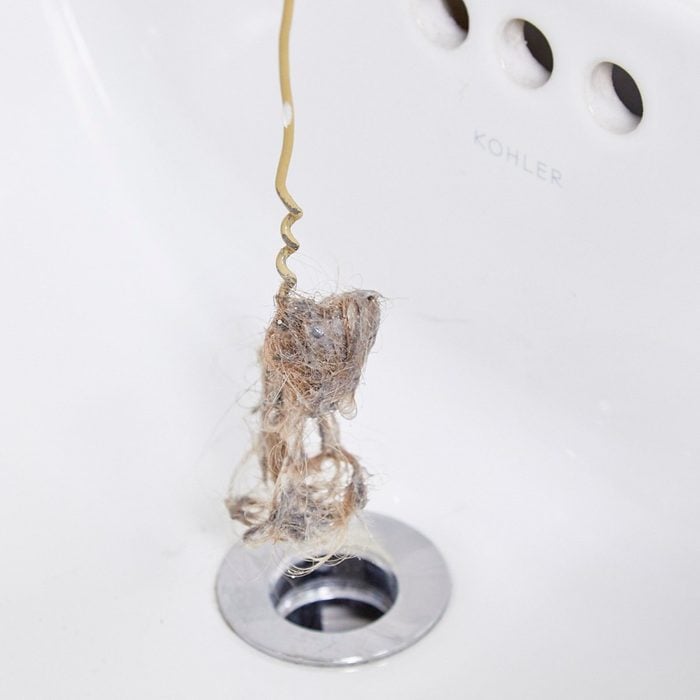
Clothes hanger drain cleaner
Hair clumps that get stuck in the drain are inevitable. Turns out, a wire coat hanger is the one of the most effective tools for unclogging them. First, untwist the wire under the hook. This leaves the hook at one end and a miniature “auger” at the other end. Push the auger end down the drain up to the clog. Bend the free end 90 degrees, forming a handle. Crank the handle so the auger bores into the clog, allowing you to pull it out.
Here are 10 bathroom cleaning tricks you’ll wish you’d known sooner.
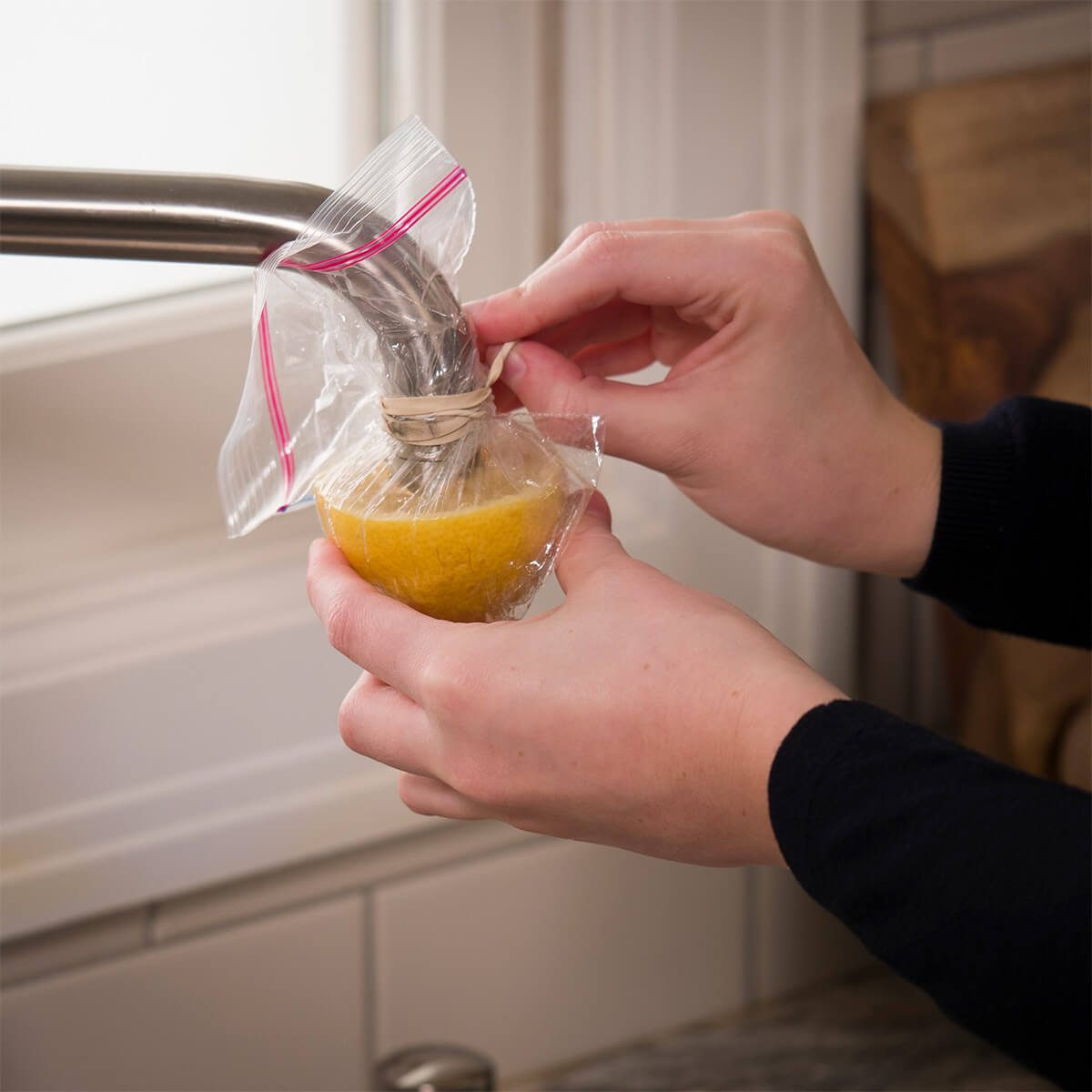
Remove hard-water buildup with a lemon
To get rid of hard-water buildup on a faucet, try this natural solution: Cut a fresh lemon in half. With one of the halves, use your thumbs to gently open up the centre. Then press the lemon onto the end of the faucet. Put a small plastic bag around the lemon and secure it around the faucet with a rubber band. Be sure that the rubber band it cinched tightly and that the lemon is around the end of the faucet. Leave the lemon in place for a few hours to allow the citric acid to work its magic.
After you remove the lemon, you may need to use a gentle scrubbing pad to wash off any loosened hard-water buildup. Then wipe the faucet with a damp cloth to remove any leftover lemon juice, and your faucet will be squeaky clean.
Find out how to clean absolutely everything in your kitchen, according to Charles the Butler of CTV’s The Marilyn Denis Show.
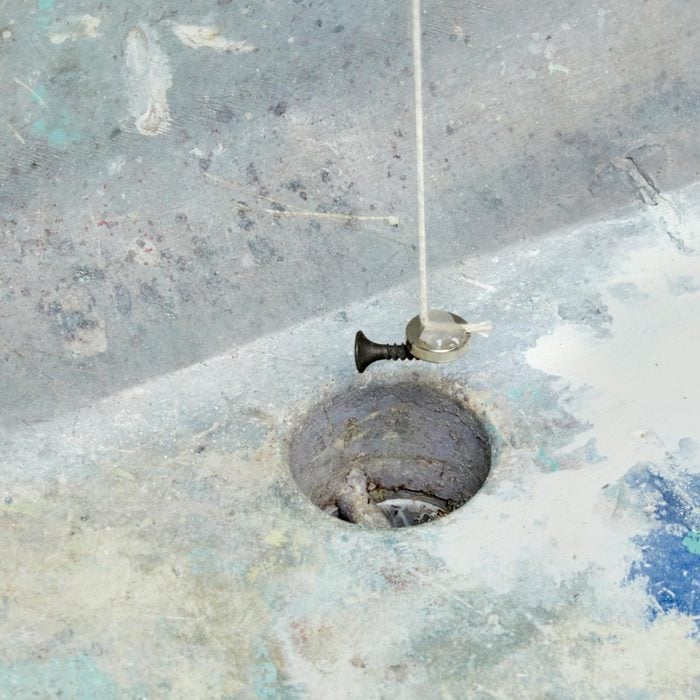
Retrieve items dropped down drains
Small and sometimes expensive items are easily washed down the sink drain. And if the item you dropped down the drain is metal like a drywall screw or washer, a simple magnet might be just what you need to retrieve the item.
Try attaching a magnet that is small enough to fit down your drain on the end of a long string or small, flexible rod that will also fit down your drain. Lower the magnet and slowly pull it back up in order to ensure you don’t drop the item once again. If you’re still without your favourite piece of jewelry, try a stronger rare earth magnet and see if that does the trick.
Next, check out 13 cleaning hacks that take the hassle out of housekeeping.